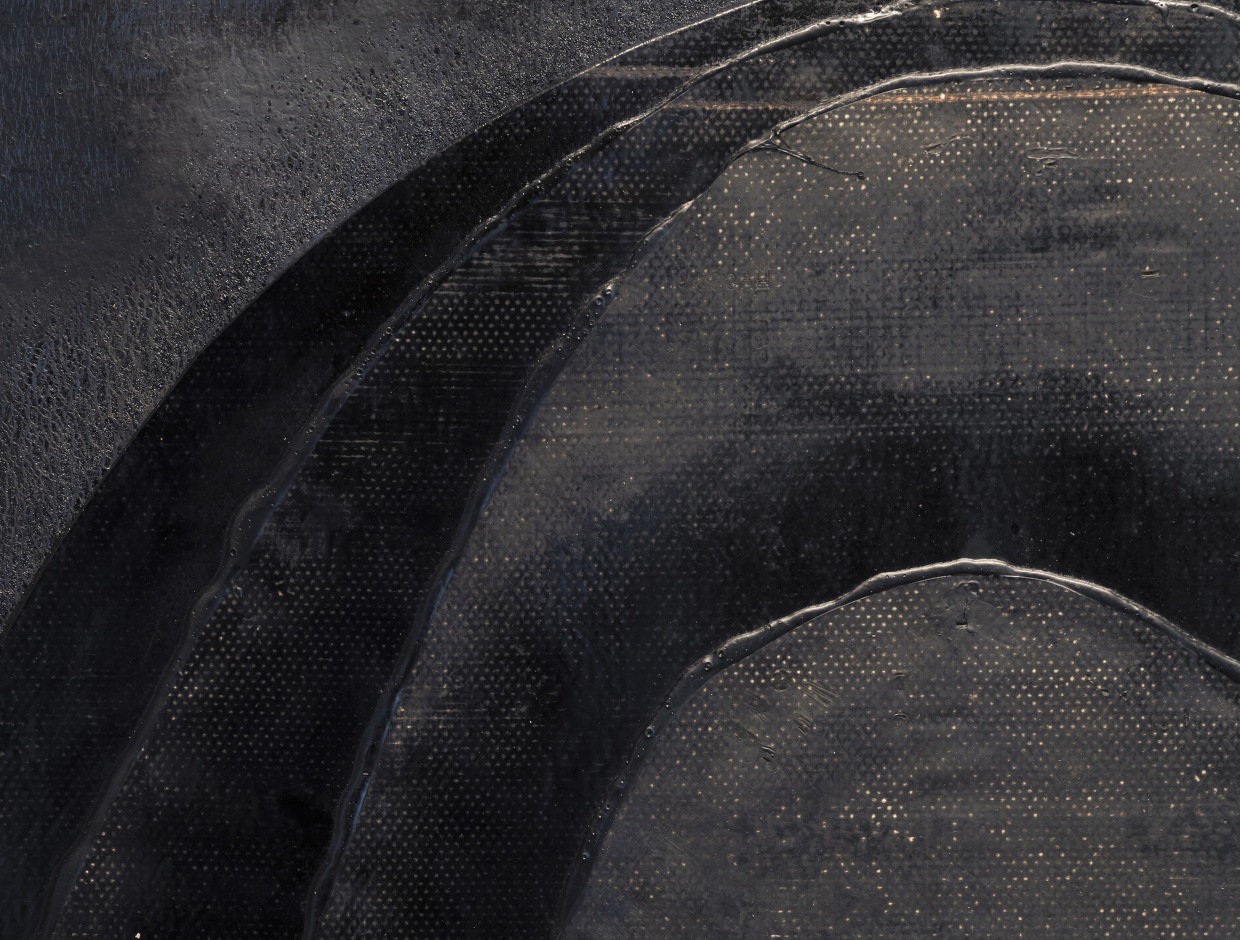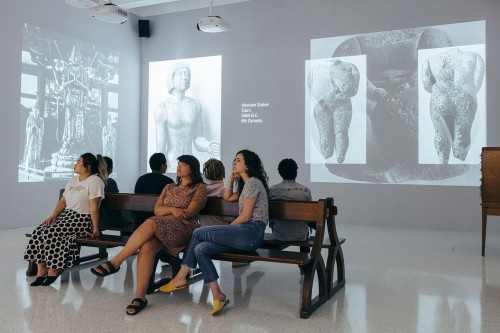

Glass lantern slides in the exhibition Photo: Bobby Rogers/Walker Art Center
It’s a slow weekday at the Walker Art Center, and only a handful of visitors are in the installation by Theaster Gates (b. 1973), the black “social practice” artist and University of Chicago visual arts professor. Part art exhibition and part sociology research project, Mr. Gates’s “Assembly Hall” is an essay on American racism.
Those viewing the exhibition with me include two female college students, one black and one white, and a young white couple decked out in black. The students, I discover in conversation, are design and communications majors on a field trip from a state university branch in Moorhead, hard by the North Dakota state line. The male of the couple sports a T-shirt that says “STOMP MY FLAG AND I’LL STOMP YOUR ASS.” I, meanwhile, am a septuagenarian white guy wary of an exhibition that promises to scold me yet again.
The exhibition occupies a giant near-square gallery that has been quartered into four smaller rooms. The entry chamber, painted dark gray, hosts a continuous sequence of projections on its walls; they come from a selection of old-fashioned lantern slides that were once used to teach college art history. Of the 60,000 images originally retrieved by Mr. Gates, only about 50 are of African art, and all were classified as “primitive.” Among the images showing in sequence are a number of European modernist works clearly imitating the Africans.
To the left of the entry chamber is a bright white space with a wall and a half of shelved, rather conventional ceramics made by Mr. Gates, who was originally a potter, along with a team of assistants. There is also some minimal seating constructed from wood salvaged from the artist’s studio. To the right of the entry room is a golden-walled space, with a couple of comfortable couches and a large, low reading table on which lie 1970s issues of the black-audience magazines Ebony and Jet. Surrounding the reading area are, among other objects, a couple of contemporary abstract paintings (by Francis Sprout and Thomas Sills ), a shelf of bound volumes of the once-upon-a-time touchstone Artforum magazine (collectively titled “Lyric and Longing,” 2019), and a huge, shamanesque sculpture, “Expansive Construction” (1971) by Richard Hunt. Physically and psychologically, these two rooms constitute the more comfortable parts of “Assembly Hall.”
The comparative respite they furnish is important, because the fourth room, diagonally opposite the entry chamber and invisible from it, is a jolt. It houses antique display cases containing examples of “negrobilia” from the collection of Ana J. and Edward J. Williams (a black Chicago businessman) now under the curatorial care of Mr. Gates. They make—or should make—any viewer extremely uncomfortable, if not retrospectively terrified. Staring out from the cases are (among about 200 other similar objects) a container of “Darkie” brand toothpaste, a copy of “Little Black Sambo” with a blithely offensive cover, advertisements for Johnnie Walker scotch and Pillsbury pancake flour in which a wealthy white fellow is waited upon by a grateful-looking black man, and—sadly, I’m not kidding—a newspaper plug for “a real Pickaninny Doll.”
Because we never talk, I can only guess at the reaction of the white couple as they proceed through this veritable warehouse of racial defamation that includes the likes of a battered old can of tobacco whose brand name contains the N-word. The students tell me they understand the racial didactics of “Assembly Hall,” but they’re more interested in the quaint sexism lurking in the magazine advertisements. The ads mostly mirror those of the time directed at white readers; a quietly proud black man drinks the right whiskey or drives the right car with an adoring black woman by his side. My own reaction is a slight, numbing depression at the artifacts of Jim Crow—who, like a vampire, never quite dies for good—coupled with a fascination at bigotry’s occasional artfulness.
“Assembly Hall” is, by any measure, an odd, conflicting fit for an art museum. On the one hand, it’s largely like a collection of grisly crime-scene photos that seems to tell the viewer, “We know some of this is off-putting, even repulsive, but it’s for the good of society that you look at it.” On the other hand, it aestheticizes a long history of racial caricature. Indeed, the graphic design of a 1942 jazz record album cover (in the “negrobilia” room), “Strictly From Dixie,” showing a black boy biting into a big slice of watermelon, is graphically crisp and attractive.
The best aspect of “Assembly Hall” is that if you’re at all sensitive to the world in which we live, you can’t just cruise through it. The show’s superb overall design slows you down; you’re almost politely compelled to stop and ponder. A valuable lesson in all of this is that offensive ideas can be quite attractively packaged. That, I would guess, is part of what Mr. Gates would want us to take away from this. The rest is the tragedy of it all.
—Mr. Plagens is an artist and writer in New York.